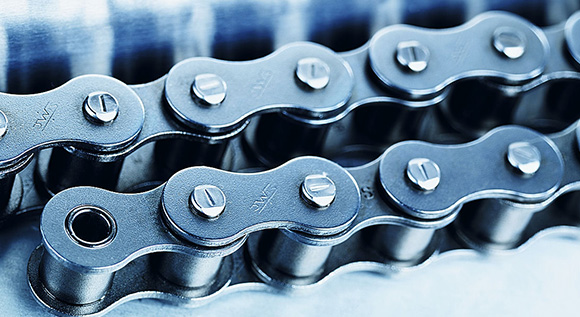As hard as diamonds: Carbon dioxide is improving the energy performance of cars
Friction on moving parts, for example within a vehicle’s transmission, leads to energy losses and wear. Researchers involved in two projects funded by the Federal Economic Affairs Ministry have investigated how such losses can be reduced.
 © Iwis Antriebssysteme
© Iwis Antriebssysteme
Cars, harvesting machines and pumps all contain gears, chains and other moving parts. When they are in operation, they rub against each other. This not only leads to considerable energy losses, but also to wear which can lead individual components to fail. Lubricants are used to help reduce friction. However, complete lubrication is not always possible, for example in certain harvesters, motorbike chains and pumps. Researchers in the field of tribology – the technical term for the study of the principles of friction – are working to optimise the surfaces of parts that rub against each other in relative motion, in order to increase energy efficiency by reducing friction. They are also adapting the lubricants to suit the different kinds of surfaces.
Twelve project partners from industry and science have come together to test new methods to significantly reduce the friction in the drive train and the engine of vehicles. The projects – PEGASUS I and II – have received funding from the Federal Ministry of Economic Affairs and Energy (BMWi) to the tune of around 18 million euros and have now been concluded. Research findings show that diamond-like carbon coatings on moving surfaces in combination with tailored lubricants reduce friction, leading to nearly zero energy loss. Scientists call this the ‘superlubricity effect’, which has been honed within the PEGASUS project for industrial applications. These include new drive systems for motor vehicles that are now run based on this new technology, increasing the vehicles’ energy efficiency and life-span. In this way, the new drive systems help reduce vehicles’ fuel consumption.
Frictional forces cannot yet be calculated exactly
The Federal Economic Affairs Ministry has placed research on friction within the research field of tribology. The biggest challenge that researchers are facing is that, to date, frictional forces cannot be calculated exactly, as not only do the surface characteristics and the lubricant’s properties have an influence on friction, but also temperature, humidity, speed and other parameters. Further research and development work is necessary in order to harness the relevant potential for improving energy and resource efficiency in new industrial applications as well.
Experts from the Federal Economic Affairs Ministry’s research field of tribology will meet at the PEGASUS closing event to present the successful results achieved in further projects and to discuss the research findings they have generated.

